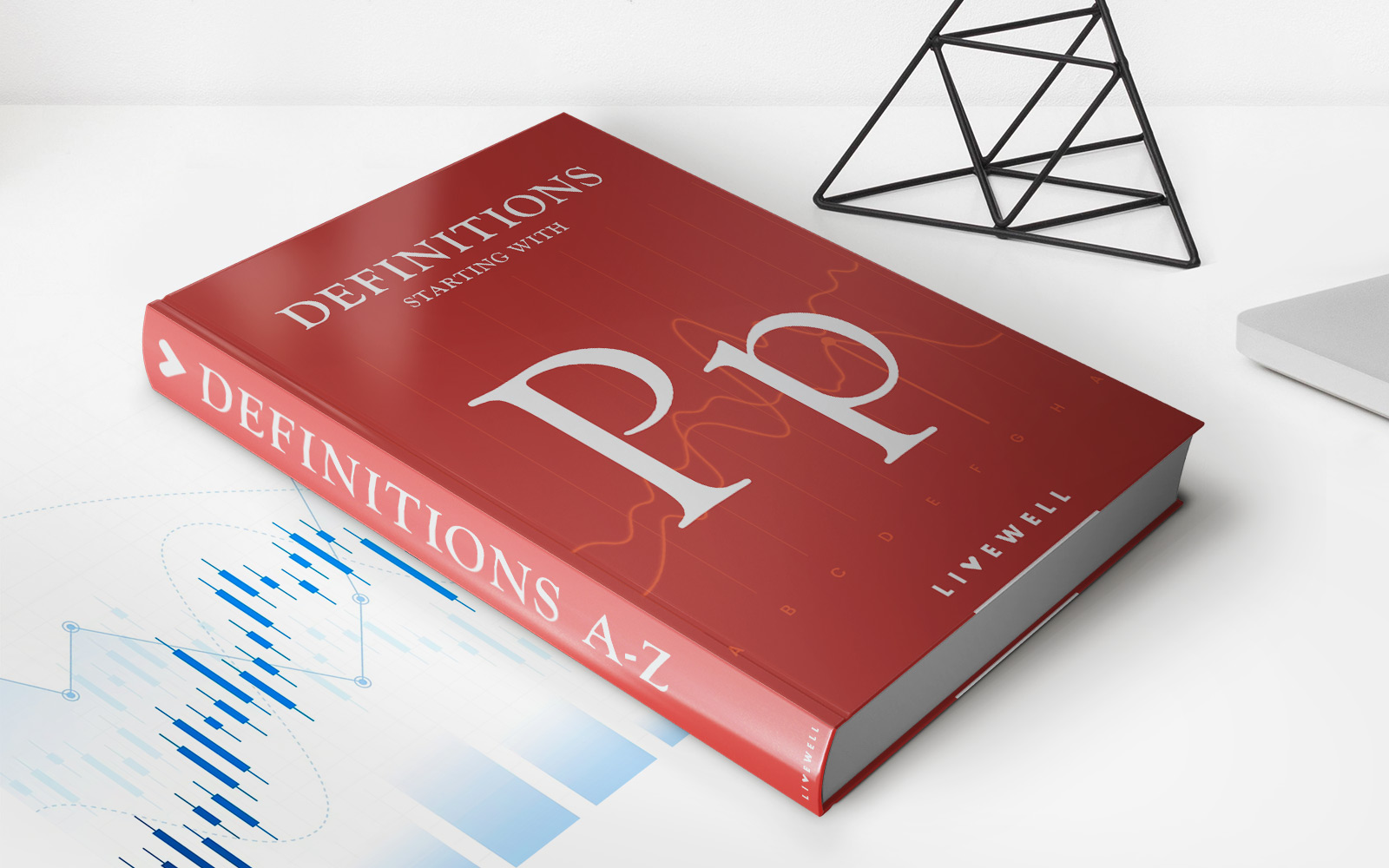

Finance
Who Can File A Consolidated Tax Return?
Published: October 29, 2023
Learn about who can file a consolidated tax return in the world of finance. Find out the eligibility criteria and advantages of consolidating your tax return.
(Many of the links in this article redirect to a specific reviewed product. Your purchase of these products through affiliate links helps to generate commission for LiveWell, at no extra cost. Learn more)
Table of Contents
- Introduction
- Definition of a Consolidated Tax Return
- Requirements for Filing a Consolidated Tax Return
- Eligible Entities for Consolidated Filing
- Ineligible Entities for Consolidated Filing
- Process of Filing a Consolidated Tax Return
- Advantages of Filing a Consolidated Tax Return
- Disadvantages of Filing a Consolidated Tax Return
- Conclusion
Introduction
When it comes to filing taxes, individuals and businesses often seek out ways to minimize their tax liability. One potential strategy that can be beneficial for certain entities is filing a consolidated tax return. This option allows eligible entities to combine their financial information and tax liabilities, resulting in potential tax savings and simplification of the filing process.
A consolidated tax return is a filing method that enables a parent company to consolidate the financial information of its subsidiary entities and report their combined income, deductions, and tax liabilities on a single tax return. Instead of each subsidiary filing its own separate tax return, a consolidated tax return provides a centralized approach.
This article will explore the concept of a consolidated tax return, the requirements for filing one, the eligible and ineligible entities, the process involved, as well as the advantages and disadvantages of using this approach. Whether you are a small business owner or a financial professional, understanding the basics of consolidated tax returns can help you make informed decisions about your tax filing strategy.
Definition of a Consolidated Tax Return
A consolidated tax return is a type of tax filing where a parent company and its subsidiaries combine their financial information and report it as a single entity for tax purposes. Instead of each subsidiary filing their own separate tax return, a consolidated tax return provides a streamlined approach, allowing for potential tax savings and simplification of the filing process.
In a consolidated tax return, the parent company acts as the representative for all the eligible subsidiary entities. The financial information of each subsidiary, including income, deductions, and tax liabilities, is aggregated and reported on one consolidated tax return. This consolidated return typically includes information such as the consolidated net income, the tax liability, and any applicable credits or deductions.
The primary purpose of filing a consolidated tax return is to provide a more accurate representation of the overall financial position of the parent company and its subsidiaries. By consolidating the financial information, it eliminates intercompany transactions and ensures that income and expenses are appropriately allocated to the entities involved.
It’s important to note that not all entities are eligible to file a consolidated tax return. There are specific requirements that both the parent company and its subsidiaries must meet in order to qualify for this filing method. These requirements will be discussed in further detail in the next section.
In summary, a consolidated tax return is a tax filing method that allows a parent company to combine the financial information of its subsidiary entities and report it as a single entity. By doing so, it provides a more accurate representation of the overall financial position and can lead to potential tax savings for eligible entities. Understanding the definition of a consolidated tax return is the first step in determining if this filing method is appropriate for your business or financial situation.
Requirements for Filing a Consolidated Tax Return
While a consolidated tax return can offer various benefits for eligible entities, it’s important to understand that not all companies can file in this manner. There are specific requirements that both the parent company and its subsidiaries must meet in order to qualify for filing a consolidated tax return.
1. Ownership Requirements: The parent company must own at least 80% of the voting stock and 80% of the total value of the subsidiary’s stock. This substantial ownership requirement ensures that the parent company has a controlling interest in the subsidiary entities.
2. Entire Taxable Year: The parent company and its subsidiaries must have the same tax year, meaning their fiscal years should align. This requirement ensures that the parent company has an accurate representation of the financials of all subsidiary entities throughout the taxable year.
3. Affiliated Group: The parent company and its subsidiaries must be part of an affiliated group. An affiliated group refers to a group of corporations connected through the 80% ownership requirement. In addition, the affiliated group must also meet other criteria, such as having a common parent corporation and a designated U.S. common parent corporation.
4. Consent to File: All eligible subsidiaries must provide consent to be included in the consolidated tax return. This consent is typically in the form of a signed agreement or election letter, confirming their willingness to be part of the consolidated filing.
5. Unrelated Business Activities: If the affiliated group engages in unrelated business activities, where the subsidiary entities are involved in activities unrelated to the parent company’s primary business, additional considerations and regulations may apply. This may impact the eligibility for filing a consolidated tax return.
It’s important to note that the requirements for filing a consolidated tax return may vary by jurisdiction, so it’s crucial to consult with a tax professional or review the specific tax laws and regulations of the relevant jurisdiction.
In summary, filing a consolidated tax return requires meeting certain requirements, including substantial ownership, alignment of tax years, affiliation within a group, consent from subsidiaries, and compliance with any applicable regulations. By meeting these requirements, eligible entities can take advantage of the potential tax savings and simplification offered by consolidated tax return filings.
Eligible Entities for Consolidated Filing
Consolidated filing is an option available for certain entities to combine their financial information and tax liabilities into a single tax return. Understanding which entities are eligible for consolidated filing is crucial in determining if this method is suitable for your business. Here are the key entities that can qualify for consolidated filing:
1. Parent Company: The parent company plays a central role in consolidated filing. It must own at least 80% of the voting stock and 80% of the total value of the subsidiary’s stock. This substantial ownership requirement ensures that the parent company has control over the subsidiary entities.
2. Subsidiary Entities: The subsidiary entities of the parent company are eligible for consolidated filing if they meet the ownership requirements mentioned above. These subsidiaries can be domestic or foreign corporations, but they must be included in the affiliated group, meaning they are part of the corporate structure with the parent company as the ultimate controlling entity.
3. Domestic and Foreign Corporations: Consolidated filing is available for both domestic and foreign corporations. However, additional considerations may apply for foreign corporations, such as ensuring compliance with international tax laws, treaty obligations, and potential regulatory requirements of the foreign jurisdiction.
4. Affiliated Group: The eligible entities must be part of an affiliated group, which consists of corporations connected through the 80% ownership requirement. The affiliated group is typically formed when the parent company and its subsidiaries meet the ownership and other criteria set by the tax authorities. It is important to note that the affiliated group must also have a common parent corporation and a designated U.S. common parent corporation in most cases.
5. Same Tax Year: The parent company and its subsidiaries must have the same tax year. This means that their fiscal years should align, ensuring that the financial information of all entities is consolidated accurately for a given tax year.
It is important to consult with a tax advisor or review the specific tax laws and regulations of your jurisdiction to ensure eligibility for consolidated filing, as it may vary depending on the country or state.
In summary, eligible entities for consolidated filing include the parent company, subsidiary entities that meet the ownership requirements, domestic and foreign corporations, and affiliated groups with a common parent corporation. Aligning the tax year and meeting any jurisdiction-specific regulations are also essential considerations. Properly identifying eligible entities is crucial in determining whether consolidated filing is beneficial for your business.
Ineligible Entities for Consolidated Filing
While consolidated filing offers benefits for eligible entities, there are certain entities that are not eligible for this method. It’s important to understand which entities fall into the category of ineligible for consolidated filing. Here are some examples:
1. Non-Subsidiary Entities: Non-subsidiary entities, meaning entities that do not meet the substantial ownership requirements, are not eligible for consolidated filing. If the parent company does not own at least 80% of the voting stock and 80% of the total value of the entity’s stock, it cannot be included in the consolidated tax return.
2. Partnership and Limited Liability Companies (LLCs): Partnerships and LLCs are not eligible for consolidated filing. These entities have a different tax structure and reporting requirements, such as filing their own separate tax returns and distributing income and expenses to individual partners or members. Each partner or member is responsible for reporting their share of the partnership or LLC’s income on their individual tax return.
3. Disregarded Entities: Disregarded entities, such as single-member LLCs, are not eligible for consolidated filing. These entities are treated as part of the owner’s tax return, not as separate entities. Therefore, they cannot be included in a consolidated tax return since their income and expenses are reported on the owner’s individual tax return.
4. Certain Foreign Corporations: While consolidated filing may be available for foreign corporations, there are specific restrictions and considerations. Some foreign corporations may not qualify due to international tax laws, treaty obligations, or the regulatory requirements of the foreign jurisdictions in which they operate.
5. Ineligible Affiliated Groups: Affiliated groups that do not meet the criteria set by tax authorities are not eligible for consolidated filing. This could include groups that fail to meet the common parent corporation requirement or fail to satisfy other criteria specific to the jurisdiction in which they operate.
It’s important to consult with a tax advisor or review the specific tax laws and regulations of your jurisdiction to determine the eligibility of different entities for consolidated filing, as rules may vary depending on the country or state.
In summary, ineligible entities for consolidated filing include non-subsidiary entities, partnerships, LLCs, disregarded entities, certain foreign corporations, and affiliated groups that do not meet the requirements set by the tax authorities. Understanding which entities are ineligible is essential in determining whether consolidated filing is suitable for your business.
Process of Filing a Consolidated Tax Return
The process of filing a consolidated tax return involves several steps to ensure accuracy and compliance with tax regulations. Here is an overview of the key steps involved in filing a consolidated tax return:
1. Ensure Eligibility: Before initiating the filing process, confirm that the parent company and its subsidiaries meet the eligibility requirements for consolidated filing. This includes meeting the substantial ownership criteria, having the same tax year, being part of an affiliated group, and obtaining consent from all eligible subsidiaries.
2. Prepare Individual Subsidiary Returns: Each subsidiary must prepare its own separate tax return, including the financial information specific to that entity. The subsidiary returns should follow the applicable tax laws and regulations of the jurisdiction in which the subsidiary operates.
3. Eliminate Intercompany Transactions: To consolidate the financial information for the parent company and subsidiaries, eliminate intercompany transactions. These transactions involve the buying and selling of goods, services, or assets between entities within the affiliated group. Adjustments are made to remove duplicate revenue, expenses, and assets to avoid double-counting on the consolidated return.
4. Prepare Consolidated Return: Once the individual subsidiary returns are prepared and intercompany transactions are eliminated, the consolidated return can be prepared. The consolidated return includes the financial information of the parent company and all eligible subsidiaries, including the consolidated net income, deductions, credits, and tax liabilities.
5. Allocate Income and Deductions: Allocate the income, deductions, and other tax attributes from the consolidated return to each subsidiary based on their respective ownership percentages. This ensures that the financial results of each subsidiary are accurately reflected on the consolidated return.
6. File the Consolidated Return: Once the consolidated return is prepared and all required allocations have been made, file the consolidated tax return with the appropriate tax authorities. Ensure that all necessary forms, schedules, and supporting documentation are included to complete the filing process.
7. Compliance and Record-Keeping: Maintain proper records and documentation of the consolidated tax return and supporting schedules. This includes documentation of intercompany transactions, allocation methods, and any other information necessary to substantiate the accuracy and compliance of the filing. Retain these records for the required period as per the tax laws and regulations of the jurisdiction.
It’s important to note that the process of filing a consolidated tax return may vary based on the specific tax laws and regulations of the jurisdiction in which the entities operate. Consulting with a tax advisor or professional with expertise in consolidated filings is recommended to ensure compliance and maximize the benefits of filing a consolidated tax return.
In summary, the process of filing a consolidated tax return involves confirming eligibility, preparing individual subsidiary returns, eliminating intercompany transactions, preparing the consolidated return, allocating income and deductions, filing the return, and maintaining compliance and record-keeping. Following these steps helps streamline the filing process and ensures accuracy and compliance with tax regulations.
Advantages of Filing a Consolidated Tax Return
Filing a consolidated tax return can offer several advantages for eligible entities. Understanding these benefits can help businesses make informed decisions regarding their tax filing strategy. Here are some key advantages of filing a consolidated tax return:
1. Tax Savings: One of the main advantages of consolidated filing is the potential for tax savings. By combining the financial information of the parent company and its subsidiaries, it allows for the offsetting of income and deductions. This can result in a lower overall tax liability compared to filing separate returns for each entity. Additionally, consolidated filing may provide opportunities to utilize tax credits and deductions more efficiently, further reducing the tax burden.
2. Administrative Ease: Filing a consolidated tax return simplifies the administrative process for eligible entities. Instead of preparing and filing separate tax returns for each subsidiary, a consolidated return allows for a centralized approach. This can save time, effort, and resources in preparing the returns and gathering necessary financial information. It also reduces the need for reconciling intercompany transactions, as they are eliminated in the consolidation process.
3. Accurate Financial Representation: Consolidated filing provides a more accurate financial representation of the entire affiliated group. It consolidates the financial information of the parent company and its subsidiaries into a single return, reflecting the combined income, deductions, and tax liabilities. This comprehensive view can be valuable for financial analysis, evaluation, and decision-making purposes. It also ensures integrity in reporting by eliminating any potential overlap or duplication of financial results.
4. Increased Flexibility: Consolidated filing offers greater flexibility in managing the tax positions of the entities within the group. It allows for the movement of income, deductions, and tax attributes between the parent company and its subsidiaries, which can be beneficial for tax planning purposes. This flexibility can help optimize the tax position of the entire group, allowing for strategic decision-making in areas such as mergers, acquisitions, and reorganizations.
5. Improved Cash Flow: Consolidated filing can positively impact the cash flow of the affiliated group. By offsetting income and deductions, it can potentially result in lower tax payments or refunds. This improved cash flow can provide additional working capital for the business, allowing for investments, expansion, or other strategic initiatives.
It’s important to note that the advantages of filing a consolidated tax return may vary depending on the specific circumstances, tax laws, and regulations of the jurisdiction in which the entities operate. It’s recommended to consult with a tax advisor or professional with expertise in consolidated filings to assess the potential benefits for your business.
In summary, the advantages of filing a consolidated tax return include tax savings, administrative ease, accurate financial representation, increased flexibility in tax management, and improved cash flow. Taking advantage of these benefits can contribute to a more efficient and cost-effective tax strategy for eligible entities.
Disadvantages of Filing a Consolidated Tax Return
While filing a consolidated tax return has its advantages, there are also potential disadvantages that businesses should consider. It’s important to weigh these factors when determining if consolidated filing is the right approach for your entity. Here are some key disadvantages to consider:
1. Loss of Individual Entity Benefits: By consolidating the financial information of the parent company and its subsidiaries, some individual entity benefits may be lost. This includes entity-specific tax incentives, deductions, or credits that could be more advantageous if claimed separately. In some cases, the potential tax savings from consolidated filing may not outweigh the loss of these specific benefits for certain entities within the group.
2. Complexity of Allocation: Allocating income, deductions, and tax attributes among the entities within the consolidated group can be a complex process. It requires careful analysis, documentation, and adherence to allocation rules. Determining the appropriate allocation can involve subjective judgments, potential disputes, or challenges from tax authorities. Incorrect or inadequate allocation can lead to inconsistencies, regulatory scrutiny, or additional tax liabilities.
3. Limited Control over Subsidiaries’ Finances: When filing a consolidated tax return, the parent company assumes control over the tax reporting and financial decisions of its subsidiaries. This reduced autonomy may limit the individual subsidiaries’ ability to optimize their tax positions based on their unique circumstances. It requires coordination and agreement among all entities within the group, which may result in delays or challenges in making timely business decisions.
4. Potential for Increased Compliance Requirements: Although consolidated filing aims to simplify the tax filing process, it may also introduce additional compliance requirements. The affiliated group is subject to specific regulations, such as the allocation of income and expenses, intercompany pricing, and transfer pricing policies. Understanding and adhering to these regulations can be time-consuming and may require additional resources, expertise, or external assistance.
5. Impact on Future Transactions: Filing a consolidated tax return can have implications for future transactions involving the parent company or its subsidiaries. This includes mergers, acquisitions, divestitures, or other reorganization activities. Consolidated filing may affect the tax basis, carryforward attributes, or other tax-related aspects that could impact the financial outcomes and tax implications of these transactions.
It’s important to carefully analyze the potential disadvantages and assess their impact on your specific business circumstances. Consulting with a tax advisor or professional with expertise in consolidated filings can provide valuable insights and help mitigate any potential drawbacks.
In summary, disadvantages of filing a consolidated tax return include the loss of individual entity benefits, the complexity of allocation, limited control over subsidiaries’ finances, potential increased compliance requirements, and the impact on future transactions. Understanding these potential drawbacks can help businesses make informed decisions when considering the use of consolidated filing.
Conclusion
Filing a consolidated tax return can be a strategic approach for eligible entities to streamline the tax filing process, potentially achieve tax savings, and present a more accurate financial representation of the entire affiliated group. However, it’s important to carefully consider the requirements, advantages, and disadvantages before deciding whether consolidated filing is the right choice for your business.
Understanding the eligibility requirements, such as substantial ownership and alignment of tax years, is crucial in determining if your entity qualifies for consolidated filing. It’s also essential to assess the potential benefits, including tax savings, administrative ease, and increased flexibility in tax management. These advantages can contribute to improved cash flow and a more efficient tax strategy.
However, it’s equally important to consider the potential disadvantages associated with consolidated filing. Loss of individual entity benefits, complexity of allocation, limited control over subsidiaries’ finances, and increased compliance requirements are factors that should be carefully weighed in the decision-making process.
Ultimately, the decision to file a consolidated tax return should be based on a thorough analysis of your specific business circumstances, including the ownership structure, affiliated group composition, and tax objectives. Consulting with a tax advisor or professional with expertise in consolidated filings can provide valuable guidance and ensure compliance with the applicable tax laws and regulations.
In conclusion, consolidated filing offers potential benefits in terms of tax savings, administrative ease, accurate financial representation, flexibility, and improved cash flow. However, it may also come with certain drawbacks that need to be carefully considered. By understanding the requirements and carefully evaluating the pros and cons, you can make an informed decision about whether consolidated filing aligns with your business goals and helps optimize your tax position.














